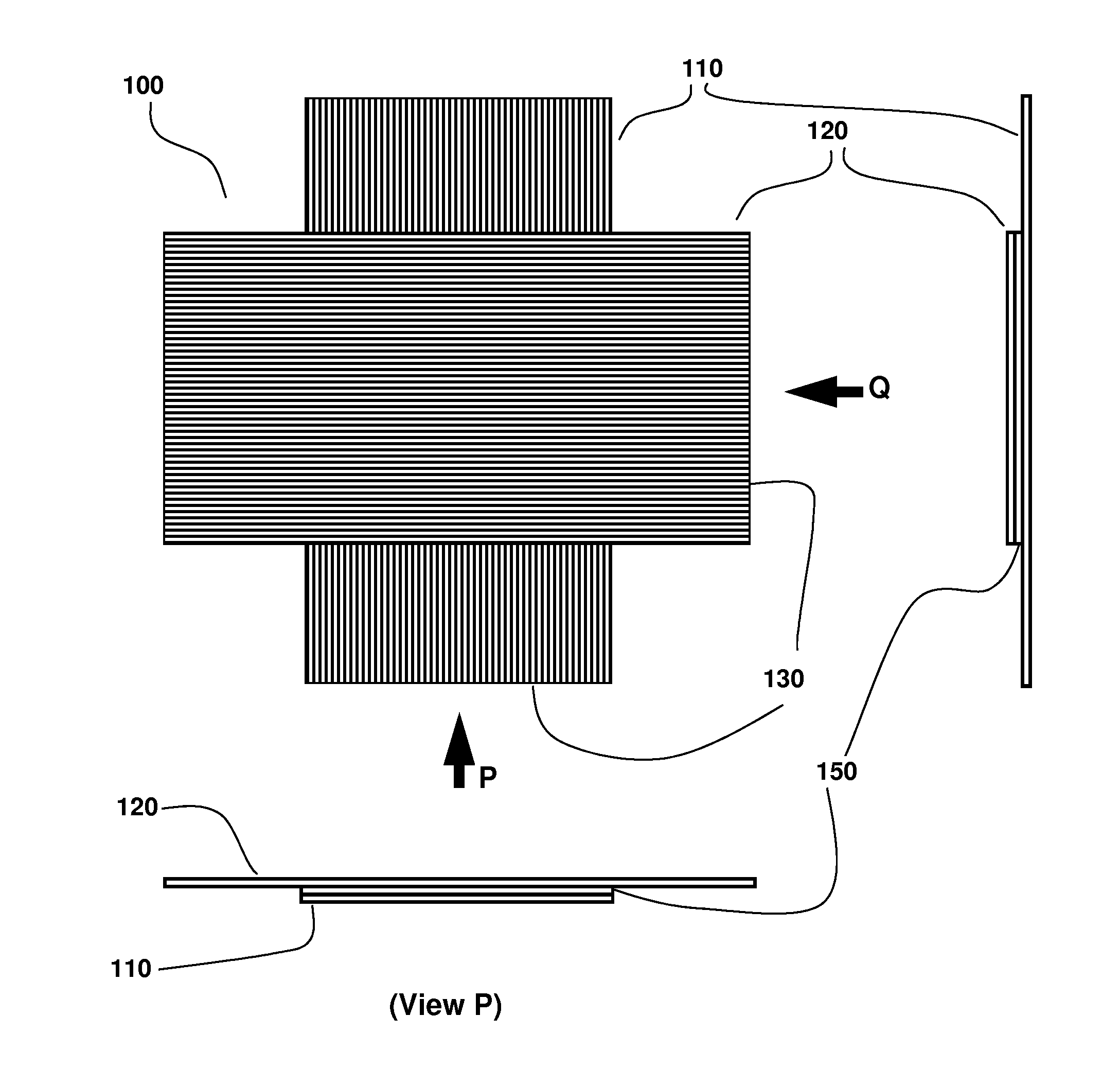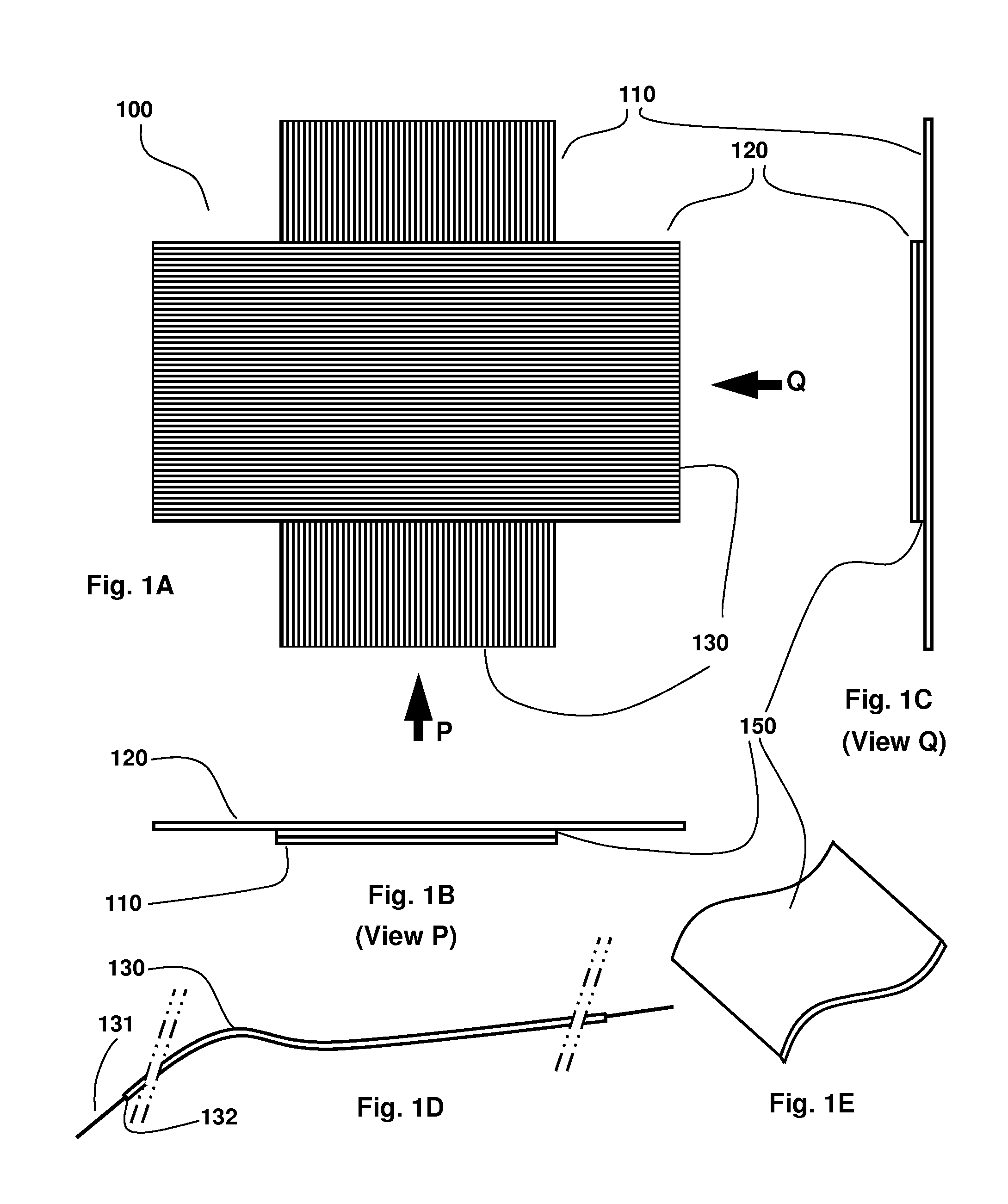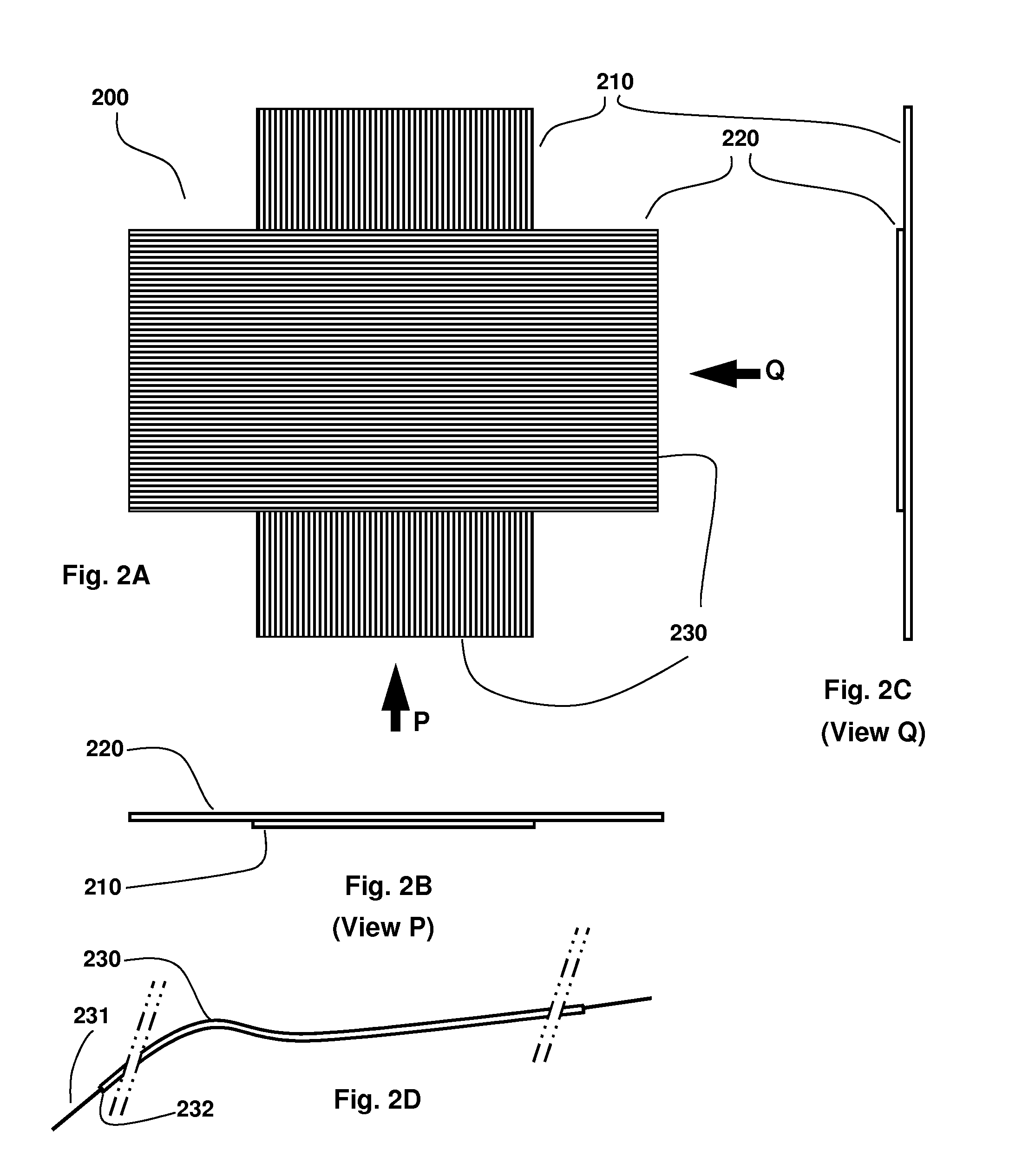Tactile array sensor
a technology of array sensor and actuator, applied in the field of multi-point sensing, can solve problems such as dielectric layer compression, and achieve the effects of reducing the need for expensive infrastructure, high resolution, and facilitating weaving fabri
- Summary
- Abstract
- Description
- Claims
- Application Information
AI Technical Summary
Benefits of technology
Problems solved by technology
Method used
Image
Examples
Embodiment Construction
[0022]A first embodiment 100 of the disclosed invention is illustrated in FIG. 1A wherein one set of insulated conductor electrodes 130 are laid in one layer 110, another set of insulated conductor electrodes 130 are laid in another layer 120 at substantially orthogonal direction to the electrodes in the first layer; the insulated conductor electrode layers separated by a dielectric material layer 150 (shown in FIG. 1E). The end views P and Q illustrated in FIGS. 1B and 1C show the arrangement of these layers relative to each other. The intersections of insulated conductors sandwiching dielectric material in-between form capacitor pixels that function as an array of the tactile sensor. In one option of this embodiment, the dielectric material is Polydimethylsiloxane (PDMS). In a second option of this embodiment, the dielectric material is a tape or sheet made of a dielectric material with dielectric constant comparable to or greater than the dielectric constant of PDMS (2.3 to 2.8),...
PUM
 Login to View More
Login to View More Abstract
Description
Claims
Application Information
 Login to View More
Login to View More - R&D
- Intellectual Property
- Life Sciences
- Materials
- Tech Scout
- Unparalleled Data Quality
- Higher Quality Content
- 60% Fewer Hallucinations
Browse by: Latest US Patents, China's latest patents, Technical Efficacy Thesaurus, Application Domain, Technology Topic, Popular Technical Reports.
© 2025 PatSnap. All rights reserved.Legal|Privacy policy|Modern Slavery Act Transparency Statement|Sitemap|About US| Contact US: help@patsnap.com



